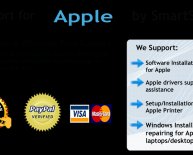
Laptop Help chat
 “We got a $300, 000 opportunity this week from live chat on our site.”
“We got a $300, 000 opportunity this week from live chat on our site.”
I’m filled with pride as I hear our VP of sales make this statement. I worked hard for six months to get the sales team invested in live chat as a sales channel and I’m finally seeing the results.
It wasn’t easy, though. For many weeks, I sat in meetings or sent detailed reports trying to explain that while we had dozens of leads coming in through live chat, they weren't being followed up on. I sadly watched the leads’ value diminish the longer they sat in the database.
But now that the sales team members were committed, live chat was proving to be a lucrative channel. I had members of the sales team asking me every week to add them as agents. They wanted in. They wanted in, because the most valuable leads are those that are on your website.
People visiting your website are there looking for something. If you can provide them with the answer they are seeking, you are going to win their favor. That’s where live chat comes in. The ability to connect directly with your visitor, at the moment they have questions about your product is an incredible driver of marketing-qualified leads and sales.
However, you only get out of live chat, what you put in: It’s difficult to realize the kind of results above without joint investment from your marketing and sales organizations. So, how do you get everyone involved? Below are the steps to getting leadership, sales, and marketing, on the live chat train.
Identify an Owner and Then Determine the Benefits
You need a live chat champion. The champion will most likely live in the marketing team. Once this person is identified, it’s critical that they set expectations with leadership, the marketing team, and the sales team regarding what live chat will accomplish.
It depends on the stage and structure of your business, but there is a likely a gap that live chat will fill. Define your initial expectations for the benefits that chat will provide. Here are a few suggestions.
- Improved understanding of site effectiveness
- Better insight on site visitors
- Increased site conversion rate
- Increased # of leads
- Increased # of MQLs
- More sales opportunities
Choose one of these improvements as a goal and make it your focus for the roll out and testing of live chat. Then, set a specific amount of time and an approach to your test. At the end of that period, measure your results.
Test It Out
Get started with a trial. Most live chat providers have a trial and SnapEngage offers a 15-Day Free Trial. It's incredibly easy to setup. The setup typically just requires adding a snippet of code to your website. Once you're up and running, you can start to validate the improvements you've defined almost instantly.
As you conduct your test, there are a few ways to know if live chat is working:
- You are chatting daily with your site visitors and chat volume is increasing
- The bounce rate on the pages where chat is installed is decreasing
- Marketing is driving conversions from visitor to lead through live chat
- You learned something from your chat conversations about your market or how to improve your website
- Your sales team closed a deal with a lead that came through live chat
- The chat agents are consistently using the tool
 Illustrate the Benefits
Illustrate the Benefits
After you have conducted your test, report your findings and the improvements you experienced to the sales and marketing team. Then, project those improvements out over a longer period of time to provide a full picture of what the future with live chat might look like.
As I mentioned, people who use live chat as an acquisition and conversion channel often find it to be one of the most successful drivers of leads in regards to volume and quality. We’ve seen that clients who use chat, experience a 10-20% increase in conversion from visitor to lead. If you experience an increase in your site conversion rate of 10%, show the impact of that over time.
Here’s an example:
Without Live Chat |
With Live Chat |
|
|
Site Visitors/Mo |
10, 000 |
|
|
Conversion Rate |
10% |
20% |
|
# of Leads |
1000 |
2000 |
|
Qualification Rate* |
36% |
|
|
Close Rate* |
27% |
|
|
# of Customers |
97 |
194 |
|
Ave. Revenue/Customer/Yr |
$1000 |
|
|
Revenue/Yr |
$97, 000 |
$194, 000 |
That’s a huge increase in revenue opportunity-nearly $100K per year-just by improving the conversion rate with live chat.
If you can illustrate these kinds of benefits to sales and marketing leadership, they will be pumped.
If you’re looking for more information to present to your sales and marketing leadership on live chat’s ability to bridge the gap between marketing and sales, you can also read our guide,
Define ownership and accountability
For chat to be a successful channel for your business, accountability needs to be clear. Most importantly, there should be committed chat agents who will respond to inbound chats. Without that, chat provides no value.
Here is the most common accountability structure we see marketing and sales teams use when it comes to live chat:
- Marketing or Marketing Operations: Frequently, marketing is the cheerleader of chat. In this role, they are commonly responsible for implementing, training, and measurement.
- Lead or Business Development Reps (LDR/BDR): These are the committed chat agents. This team is responsible for managing the inbound chats, qualifying them, and then handing them off to sales.
- Sales Account Execs: Once the leads have been qualified and passed along, sales is responsible for the following up right away and moving qualified leads through the sales process.
For companies with existing LDR/BDR teams, chat is a no-brainer. It provides the entry-level employees with a less intimidating way to interact with prospects and the opportunity to get familiar with the product and frequently asked questions they might encounter, but in a controlled environment, which prepares them for the phones.
For companies without an existing front line for sales, you can enlist sales reps, marketers, or office admins.

















